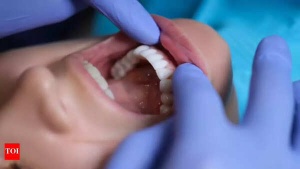SpaceX has offered a rare glimpse inside its Starlink satellite factory in Redmond, Washington, showcasing a facility capable of producing 70 satellites per week. The company released a video highlighting the assembly, packaging, and component production processes, demonstrating how it rapidly scales Starlink manufacturing. Alongside the production milestone, SpaceX revealed details about its mini laser technology, designed to allow third-party satellites and space stations to connect to the Starlink network at high speeds. This insight comes just ahead of Starship’s tenth test flight, which will deploy Starlink simulators to test Starship’s payload deployment capabilities.
SpaceX ramps up rapid satellite production
The Redmond facility can churn out 3,640 satellites per year, a massive increase from 2020, when SpaceX produced just 120 satellites per month. Senior directors Akash Badshah and Cornelia Rosu emphasized the speed of iteration and assembly, highlighting how the factory integrates fast-turnaround manufacturing with quality control. This production capability is essential as SpaceX seeks approval to operate up to 30,000 Starlink satellites, expanding global coverage and improving internet speeds worldwide.
Mini lasers for inter-satellite and third-party connectivity
SpaceX is equipping its satellites with laser links, enabling communication between satellites and high-speed data routing. A newly developed mini laser allows third-party satellites and space stations to connect to Starlink. The device is designed for speeds of up to 25Gbps over distances of 4,000 km and was successfully tested on the Starlink G10-20 mission. This technology promises enhanced flexibility for space-based communication and expands the Starlink ecosystem beyond SpaceX-owned satellites.
Starship’s role in Starlink deployment
The tenth Starship test flight will carry eight Starlink simulators, designed to mimic next-generation Starlink satellites, testing Starship’s ability to deploy payloads efficiently. Starship’s larger capacity compared to Falcon 9 will allow SpaceX to launch larger satellite batches, accelerating constellation growth and reducing costs per satellite. The success of these deployments is critical for scaling the Starlink network globally and integrating mini-laser-enabled satellites in orbit.
Additional facilities supporting Starlink
SpaceX also operates a factory in Bastrop, Texas, focused on producing Starlink antenna dishes, with output reaching 15,000 units per day. Together with the Redmond facility, these operations demonstrate SpaceX’s vertically integrated approach, controlling both satellite production and consumer hardware. This end-to-end capability is crucial for maintaining rapid rollout of the Starlink service while preparing for future upgrades and expanded connectivity solutions.
 Gavaskar Calls for Kuldeep Yadav's Inclusion in Second Test Amid Bumrah Fitness Concerns
Gavaskar Calls for Kuldeep Yadav's Inclusion in Second Test Amid Bumrah Fitness Concerns
 Early Warning Signs: 5 Heart Attack Symptoms to Watch Out For a Month in Advance
Early Warning Signs: 5 Heart Attack Symptoms to Watch Out For a Month in Advance
 Oral Cancer: Spot the Signs, Understand the Risks, and Why Early Detection is Key
Oral Cancer: Spot the Signs, Understand the Risks, and Why Early Detection is Key
 Rishabh Pant's Composed Reply Deflates Harry Brook's Sledge in Edgbaston Test: Watch Key Moments
Rishabh Pant's Composed Reply Deflates Harry Brook's Sledge in Edgbaston Test: Watch Key Moments
 Rohit Sharma Credits Barbados as India's Lucky Ground After T20 World Cup Triumph
Rohit Sharma Credits Barbados as India's Lucky Ground After T20 World Cup Triumph
 Jaiswal Aims to Eclipse Gavaskar's 49-Year-Old Record in Edgbaston Test Showdown
Jaiswal Aims to Eclipse Gavaskar's 49-Year-Old Record in Edgbaston Test Showdown
 FIFA Club World Cup 2025: Upsets, Messi Magic, and 2026 World Cup Concerns Emerge From Group Stage
FIFA Club World Cup 2025: Upsets, Messi Magic, and 2026 World Cup Concerns Emerge From Group Stage
 Science-Backed: Simple Habits for a Stronger Heart, According to Experts
Science-Backed: Simple Habits for a Stronger Heart, According to Experts
 Prithvi Shaw Admits to Missteps, Lost Focus Amid Career Setbacks
Prithvi Shaw Admits to Missteps, Lost Focus Amid Career Setbacks
 India's Fielding Failures Under Scrutiny After First Test Defeat to England: Former Selector критикует Dropped Catches
India's Fielding Failures Under Scrutiny After First Test Defeat to England: Former Selector критикует Dropped Catches